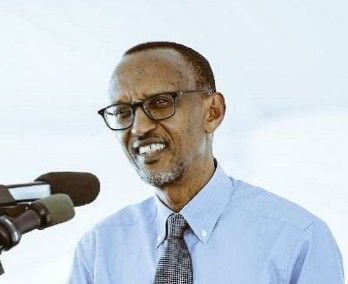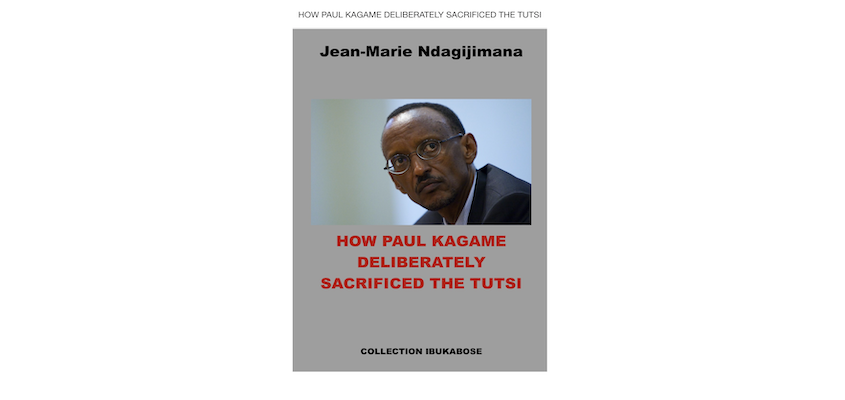
All Global Research articles can be read in 51 languages by activating the Translate Website button below the author’s name (only available in desktop version).
To receive Global Research’s Daily Newsletter (selected articles), click here.
Click the share button above to email/forward this article to your friends and colleagues. Follow us on Instagram and Twitter and subscribe to our Telegram Channel. Feel free to repost and share widely Global Research articles.
Global Research Fundraising: Stop the Pentagon’s Ides of March
***
This year, 2024, marks the 30th anniversary of the Rwandan Genocide. Ann Garrison reviews “How Paul Kagame Deliberately Sacrificed the Tutsi,” one of many important books that challenge the prevailing narrative about the events of 1994.
On October 1, 1990, Ugandan troops invaded Rwanda from Uganda. They wore Ugandan uniforms, drove Ugandan vehicles, and carried weapons from the Ugandan arsenal. They were led by top ranking officers in the Ugandan military who had family roots in Rwanda and called themselves the Rwandan Patriotic Front (RPF). Led by then General, now President Paul Kagame, they were determined to seize power in Rwanda and re-establish the ethno-supremacist Tutsi rule that had ended with the Hutu Power Revolution of 1959. They succeeded after waging a four-year war, with the help of the US, and though Rwanda pretends to have ended ethnic division and exclusion, a Wikileaks diplomatic cable reveals that all top government positions are in fact held by Tutsi and Rwanda reconciliation is a lie. Only Tutsi are allowed to publicly mourn their family members who died in the 90-day massacres of 1994, and the description “genocide against the Tutsi” is legally codified and enforced. Anyone using any other description faces prison time in Rwanda.

The invasion violated international law and Rwanda’s sovereignty, but the world barely noticed. The UN Security Council declined to even discuss it, despite the request of Rwanda’s Ambassador to the UN. Ugandan President Yoweri Museveni had just become President of the Organization of African Unity (OAU)—which later became the African Union—and as such he assumed the role of “mediator” even though he was the principal aggressor and of course had no interest in upholding international law.
In “How Paul Kagame Deliberately Sacrificed the Tutsi, ” former Rwandan Ambassador to Paris Jean-Marie Ndagijimana writes,
“Two months earlier, on 2 August, 1990, Iraq under Saddam Hussein invaded its little neighbor Kuwait, and the international community went to work to put out the oil pipeline fires in what is the world’s premier oil reserve. So we poor Negroes could kill one another in silence without bothering the masters of the world who were busy elsewhere.”
The ensuing four-year war included the RPF’s horrific massacres, including targeted massacres of Hutus, but it was still barely noticed by the international community until it finally concluded in the 90-day bloodbath that included both Tutsi and Hutu genocides. Only the Tutsi genocide was broadcast around the world and later depicted in the Hollywood movie “Hotel Rwanda.”
Millions of people saw “Hotel Rwanda,” and the Rwandan Genocide thus came to be understood ahistorically, as a sudden 90-day episode of mass psychosis and bloodlust in which the Hutu majority attempted to exterminate the Tutsi minority. Hutu people have been demonized not only in Rwanda but around the world ever since. For thirty years, Rwandan President Paul Kagame has been allowed to wage a devastating war in the Democratic Republic of the Congo on the grounds that he is hunting Hutus who were guilty of the genocide against the Tutsi and who still threaten Rwanda.
“Stopping the next Rwanda” became the battle cry of the humanitarian warriors led by Samantha Power, who built her career on “Bystanders to Genocide, ” her crusading critique of the Clinton administration for failing to stop the genocide. She insisted that we must all from hereon be “upstanders,” not bystanders to genocide, most notably in Libya and Syria, but she hasn’t called for any upstanding to stop genocide in Gaza.
“How Paul Kagame Deliberately Sacrificed the Tutsi” is one of many important books that tell the far more complex story of both Hutu and Tutsi genocides that took place over four years in Rwanda and years after that in the Democratic Republic of the Congo.
It was a Ugandan invasion he writes, but it “was gradually transformed into a civil war by the desire for appeasement between the parties.” In other words, the Rwandan government led by President Juvenal Habyarimana accepted that the Ugandan troops with Rwandan roots were Rwandans and entered into negotiations with them, which produced the Arusha Accords signed in Arusha, Tanzania, on August 4, 1993, by the Rwandan government and the RPF.
The Arusha Accords laid out a timetable that would lead to the multi-party elections that the international community had insisted on. However, Paul Kagame and the RPF, as a minority Tutsi party, could not have won those elections, so he had to find an excuse to seize power by force of arms with the support of the US. That excuse was, Ndagijimana argues, the genocide of the Tutsi who remained in Rwanda after the Hutu Revolution of 1959.
Ndagijimana cites the abundant evidence that Kagame ordered the assassination of President Habyarimana, which triggered panic and the horrifying Tutsi massacres broadcast internationally. “It must be noted, however,” he writes, “that the involvement of Paul Kagame does nothing to excuse the perpetrators of the Tutsi genocide, even if it does explain the Machiavellian cynicism of this former chief of military intelligence for the Ugandan army.”
As soon as the president was assassinated, the RPF broke the ceasefire, launching a push to seize power while claiming that they were fighting to save the Tutsi. The government and its army made repeated pleas to stop the war so that they could stop the Tutsi genocide, but Kagame and the RPF absolutely refused and even blocked a plan for UN intervention because they were determined to see the RPF and Kagame seize power. “The RPF and the American government did everything they could to make sure our parents would not be saved from these massacres,” Ndagijimana writes. “They stacked ‘one obstacle on another’ to keep the UN from sending international troops to stop the genocide, with their sole purpose being to allow Kagame to ‘ascend to power.’”
Ndagijimana is of both Hutu and Tutsi parentage. Why, he asks, shouldn’t he be allowed to mourn both, and why shouldn’t both receive justice? He says, as many others have, that the unequal, victor’s justice meted out by the International Criminal Tribunal on Rwanda and the repression of memory and mourning create dangerous ethnic tension simmering below Rwanda’s facade of ethnic reconciliation.
“I already know,” he writes, “what to expect from writing this book: to be held up to public obloquy as a negationist and revisionist. It is a sort of existential challenge when you consider the fate that generally awaits confirmed negationists and revisionists. I accept this challenge because there is no price on the Truth. I crossed the Rubicon without trepidation. I have been a political exile far from my home since 1994. I felt welcome in France because it represented an alternative to the atmosphere of terror that pervaded my country. If I had to continue living in fear of expressing myself in this country I consider my second home, I don’t know what I would be doing in France.”
Jean-Marie Ndagijimana is far from the only one to publish the same, similar, and related conclusions with various areas of emphasis and investigation. This is an incomplete list:
*
Note to readers: Please click the share button above. Follow us on Instagram and Twitter and subscribe to our Telegram Channel. Feel free to repost and share widely Global Research articles.
Ann Garrison is a Black Agenda Report Contributing Editor based in the San Francisco Bay Area. In 2014, she received the Victoire Ingabire Umuhoza Democracy and Peace Prize for her reporting on conflict in the African Great Lakes region. She can be reached at [email protected]. You can help support her work on Patreon.
Comment on Global Research Articles on our Facebook page
Become a Member of Global Research
Source link

